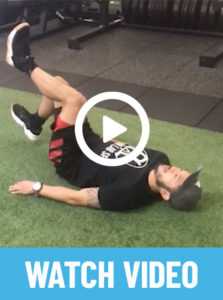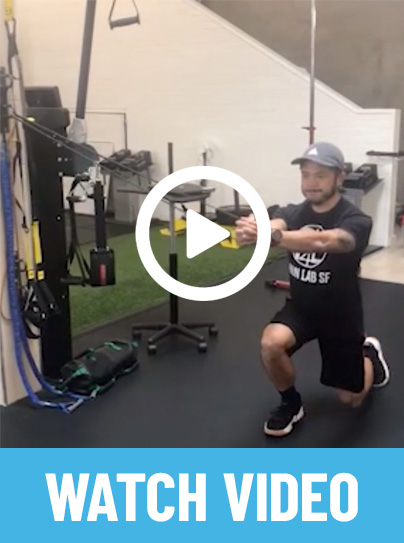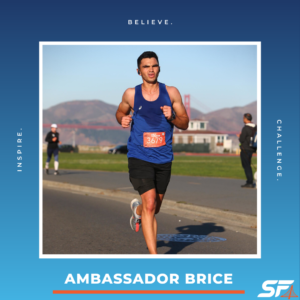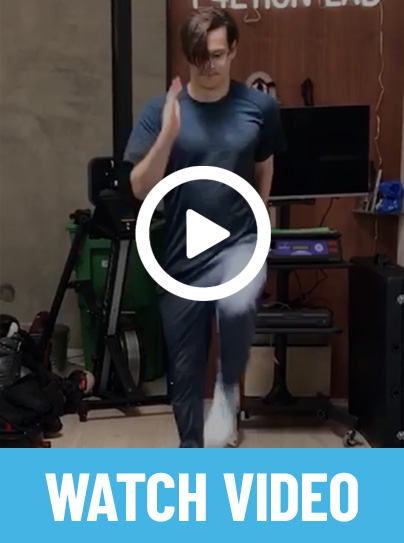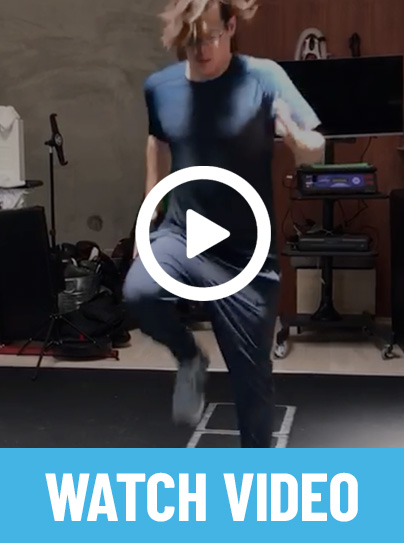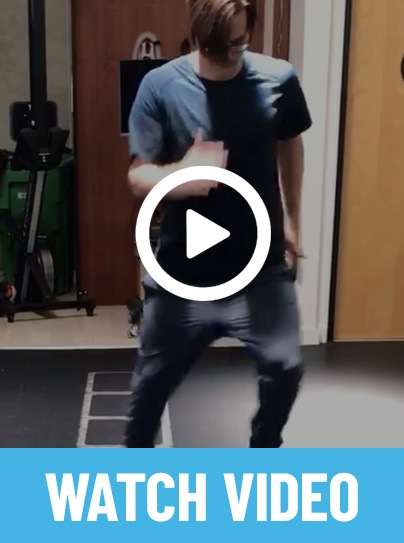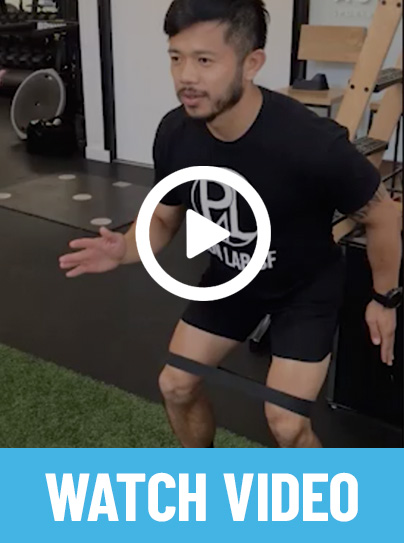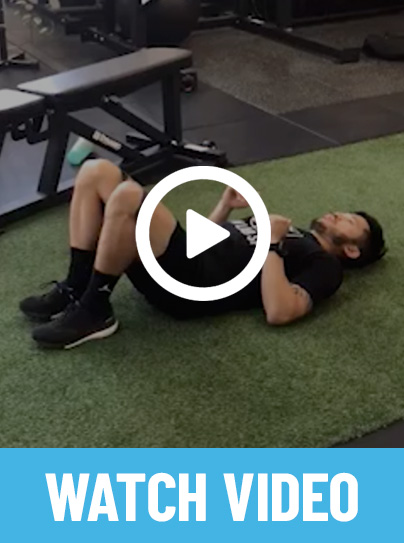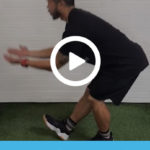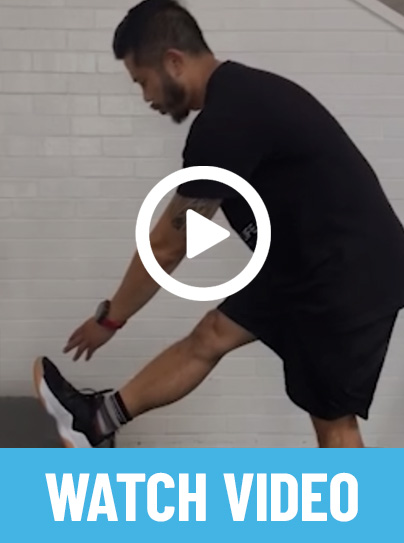Get Race Ready with these Training Tips!
- Core Exercises for Better Runs | March 11, 2020A strong core helps runners with their stability, balance, posture and overall control. By activating the core you can resist rotation of the torso and optimize power output (more efficiency + power). This will increase running economy by preventing energy being lost in any direction except forward. Core activation also stabilizes the hip and prevents lordotic posture. Runners with lower back pain should especially do core activation prior to running, along with stretch the hip flexor and activate the glutes.Try theses exercises to help strengthen your core:
Single Leg Heel Tap
– Lay on back
– Knees bent at 90 degrees and placed directly above hips
– Push lower back into ground using your core
– Tuck hips
– Keeping knee bent at 90 degrees, lower the leg until the heel taps the ground (KEEPING LOW BACK ON GROUND ENTIRE TIME)
– Return to starting position
– Alternate legs, 10 reps on each sidePlank with Hip Extension
– Get into plank position with elbows down
– Engage glutes
– Lift heels up to ceiling, lower, repeat
– 15 reps each legAnti-Rotation Lunges
– Stand with band interlocked between hands
– Extend arms directly in front of chest and hold there for the entirety of the exercise
– Step away to increase resistance
– Begin reverse alternating lunges, keeping hands up and in front of chest (resisting rotation)
– 10 reps on both sides - 3 Marathon Training Mistakes | March 3, 2020With marathon training ramping up, there are a few common mistakes we want to help you avoid. Whether your an experienced marathoner or new runner, here is a quick video of 3 common training mistakes and how to avoid them:
Video courtesy of The Run Experience.
- Positive Visualization | February 21, 2020Ambassador Tip Of The Week: Positive VisualizationTake a moment right now and picture yourself crossing the finish line at the 2020 San Francisco Marathon, and feel the emotion of running your best race ever! The power of positive visualization can help improve and attract the success of running a strong race.It’s also important to remind yourself of your “Why?” For example ask yourself: why are you training for the San Francisco Marathon? When you know your “why?” it helps to reframe your mindset and makes it easier to tackle obstacles during training or tough moments on race day. I remind myself of my “Why?” and visualize crossing the finish line, holding my kid in my arms, and believing that I gave all I had this particular day. When you visualize the end goal, not only will it help you as a runner but it also teaches you to use this tool outside of running.
- Ladder Training | February 18, 2020If your looking to run faster, and be more efficient, Ladder Training is an essential component of your routine. Ladder training has shown to increase stride frequency (cadence) by reducing ground contact time. Ladder Training has also shown to increase efficiency by developing motor skills. Check out these three ladder workouts:
Workout 1: A-Skips
STEPS
– Chest Up
– Lean forward
– Skip in place, driving knees up
– Stay on toes
– Elbows at 90 degrees, move arms contra laterally to knees
– Maintain a quick turnover
Workout 2: High Knees
STEPS
– Chest Up
– Lean forward
– Skip in place, driving knees up
– Stay on toes
– Drive knees up to hip level
– Elbows at 90 degrees, move arms contra laterally to knees
– Maintain a quick turnover
Workout 3: Quick Feet
STEPS
– Chest Up
– Lean forward
– Stay on toes
– Elbows at 90 degrees, move arms contra laterally to knees
– Step one foot in and out of each box, repeat on both sides
– Maintain a quick turnoverWorkout Videos courtesy of Perform For Life Run Lab
- Top Tips for Running (down) Hills | February 10, 2020Our course wouldn’t be complete without San Francisco’s iconic hills. Most runners focus on the difficulty of the climb, but what they aren’t focusing on is proper downhill running. By properly training for downhills you are preparing your body to handle these eccentric contractions and improving your performance on descent courses.Here is a quick video demonstrating how to properly train to run downhill:Video courtesy of The Run Experience.
- Core & Legs Strength Training Excercises | February 4, 2020Ambassador Tip Of The Week: Core & Legs Strength Training ExercisesIt’s important to maintain a level of fitness through a simple strength training routine as you build up endurance – specifically core exercises and leg exercises. Here are some helpful moves to add to your daily routine:
- Forearm planks and side planks – hold for 30-60 seconds each x 2-4 rounds
- Squats (body weight or with dumbbells) – 15-25 reps x 4 rounds
- Lunges – 15-25 reps x 4 rounds each side
- Glute Activation | January 28, 2020
Glute Activation
Why: The gluteus maximus and gluteus medius are responsible for extending the leg and stabilizing the knee and hip. Activating the gluteus before a run will stabilize the hips, promote good posture, and reduce the knee collapsing.
Lateral Band Walk
Cues:– Place glute band directly above knees– Get into a half squat position– Keep feet shoulder width apart– Knees behind laces– Take moderate sized lateral steps leading with the knee– Return feet back to shoulder width apart / repeat– 30 seconds on both sidesMonster Walk
Cues:– Place glute band directly above knees– Get into a half squat position– Keep feet shoulder width apart– Knees behind laces– Take diagonal step forward– Return feet back to shoulder width apart / repeat– Do NOT rotate hips, hips should face forward the whole time– 30 seconds back and forthSingle Leg Glute Bridge
Cues:– Place glute band directly above knees– Lie on back with knees bent at 90 degrees– Drive hips towards sky– Raise up one leg– Lift hips up and down for 10 reps both sides– Do NOT rotate hips and keep hips tucked (glutes and core should be on!) - Ways To Stay Motivated During Winter Running | January 21, 2020
 Ambassador Tip Of The Week: Ways to stay motivated during winter running•Set yourself up for success with the proper apparel and equipment by planning ahead. If you run in the dark make sure you have reflective gear, or a head lamp. When the weather is cold don’t forget hat, mittens and extra layers. You can always take off layers, but you can’t add any once you’re out the door.•Set realistic goals with pace and time when the elements aren’t ideal. If the road may be icy, accept that your pace will be slower and be ok with it.•Make sure you are hydrated properly. Even though it is cold, our bodies are still working hard to keep us warm so we need extra fluids to function at optimal levels.
Ambassador Tip Of The Week: Ways to stay motivated during winter running•Set yourself up for success with the proper apparel and equipment by planning ahead. If you run in the dark make sure you have reflective gear, or a head lamp. When the weather is cold don’t forget hat, mittens and extra layers. You can always take off layers, but you can’t add any once you’re out the door.•Set realistic goals with pace and time when the elements aren’t ideal. If the road may be icy, accept that your pace will be slower and be ok with it.•Make sure you are hydrated properly. Even though it is cold, our bodies are still working hard to keep us warm so we need extra fluids to function at optimal levels. - Two Stretches To Do Before and After Runs | January 14, 2020
Hamstring
During a run, the hamstring is utilized to bend the knee in the swing phase and extend the hip in the drive or push-off phase, therefore, during a distance run the hamstring takes a beating. This is why it takes a dynamic stretch before a run to activate it and a static stretch after the run to loosen it.
Before A Run (Dynamic) = Standing Alternating Single Leg Scoops
Leg you are scooping should be straight, toe pointed toward you
Exhale as you go down, inhale as you go up
8-10 reps on each legAfter A Run (Static) = Standing Elevated Single Leg Hamstring Stretch
Toe pointed toward you, leg straight
Driving chest forward as you exhale and reach down towards your toe
Hold for 30-60 seconds
IT Band
The IT band keeps the hip and knee stable during a run. It also assists in moving the knee joint during a run. This is why it is the most common overuse injury among runners. When the IT band is not working properly, movement of the knee becomes painful, causing knee pain or what is infamously known as “runner’s knee.” Therefore, it is important to dynamically activate it before a run and loosen it following a run with a static stretch.
Before A Run (Dynamic) = Figure 4’s
Ankle resting on the opposite knee
Exhale as you lower your body into a seated position
Hold for 3 seconds, then repeat for 8-10 reps on each sideAfter A Run (Static) = Prone Pigeon Pose
Drive one foot across body, opposite leg remains behind you with toe pointed into ground
Focus on exhale and driving chest down as far as you can to ground
Hold for 30-60 seconds
One on each side
These stretches are in partnership with Perform For Life Run Lab. The Perform For Life Run Lab is San Francisco’s training hub for runners. The Run Lab supports the local running community through running analysis, VO2 Max Testing, personalized training programs, nutrition, and running-specific group classes. The Run Lab empowers runners to optimize performance, and prevent/overcome injuries through education and community.
- Dynamic Warm Ups | January 7, 2020
Why Dynamic Warm Ups Are Important,
and How To Do ThemWe’re going to let you in on a little secret: Slow jogging is not the best way to warm up for your workout. Of course, it gets your blood flowing and your heart rate elevated. But the benefits stop pretty much there. Why?
Whether you’re rolling out of bed, out of the car, or out of work to go run, you may notice that you feel stiff, slow, and asleep – and that it takes a LONG time to feel “good”. Running “asleep” in this way usually leads to sloppy mechanics – and that’s the big problem. Sloppy mechanics contribute more than you may realize to potential injury, and a finishing time that doesn’t meet your potential.
Fortunately, with a few exercises and a little elbow grease, you can dramatically change how your body feels and performs.
Try these movements in the first 10 minutes of your next run. Training with a buddy? Challenge them to do a burpee with you. 🙂 You’ll be a better athlete for it. And better athletes make better runners.
HOW TO DO THE DYNAMIC RUN WARM UP
After 5 minutes of easy running, stop and perform the following:- 10 Squats
- 10 Leg Swings per leg
- 10 Long Lunge Hip Circles each way
- 10 Arm Hugs
- Just 1 Burpee (but if you want to do a few more we won’t stop you.)
- Avoid These Common Training Mistakes | December 17, 2019
Mistake #1: No or little strength training
It’s completely reasonable for all runners to include 2 whole body strength-focused sessions each week. The good news? You can accomplish a lot in just 30 minutes to drastically reduce injuries and build a more powerful body.Mistake #2: No daily mobility practice
21st century living leads to tight hips, weak glutes, and a hunched upper back. Take 15 minutes per day to work to roll out your feet, smash your quads, and iron out those kinky calves to improve recovery and remain injury free.Mistake #3: No or little hill specific run training
Specificity is key when it comes to a successful marathon in San Francisco. Be sure to include hills both in your long runs and in a separate interval session so you can arrive well adapted and race ready. - Strengthen Your Hips With This Post Run Routine | December 10, 2019
Your hips do a TON if you think about it – and it’s about time we give them some proper love and support in the form of a post-run strength routine!
The four body weight exercises in this routine are hand-picked for their ability to improve core strength, stability, balance, and range of motion.
Done together, the entire routine only takes 10 minutes, can be done anywhere, and will contribute to a strong, stable body that doesn’t break down.
WHAT’S IN THE POST-RUN HIP STRENGTH ROUTINE?
10 Single Leg Bridges
10 Side Plank Leg Raises Per Side
10 Single Leg ¼ Squats
10 Single Leg Burpees (total)If you’re new to this type of strength routine, start with 3 rounds of 5 reps of each.
If you’re an experienced veteran, jump right in to 4 sets of 10 reps.
No matter who you are, add this routine in 2 times per week for maximum effect!



